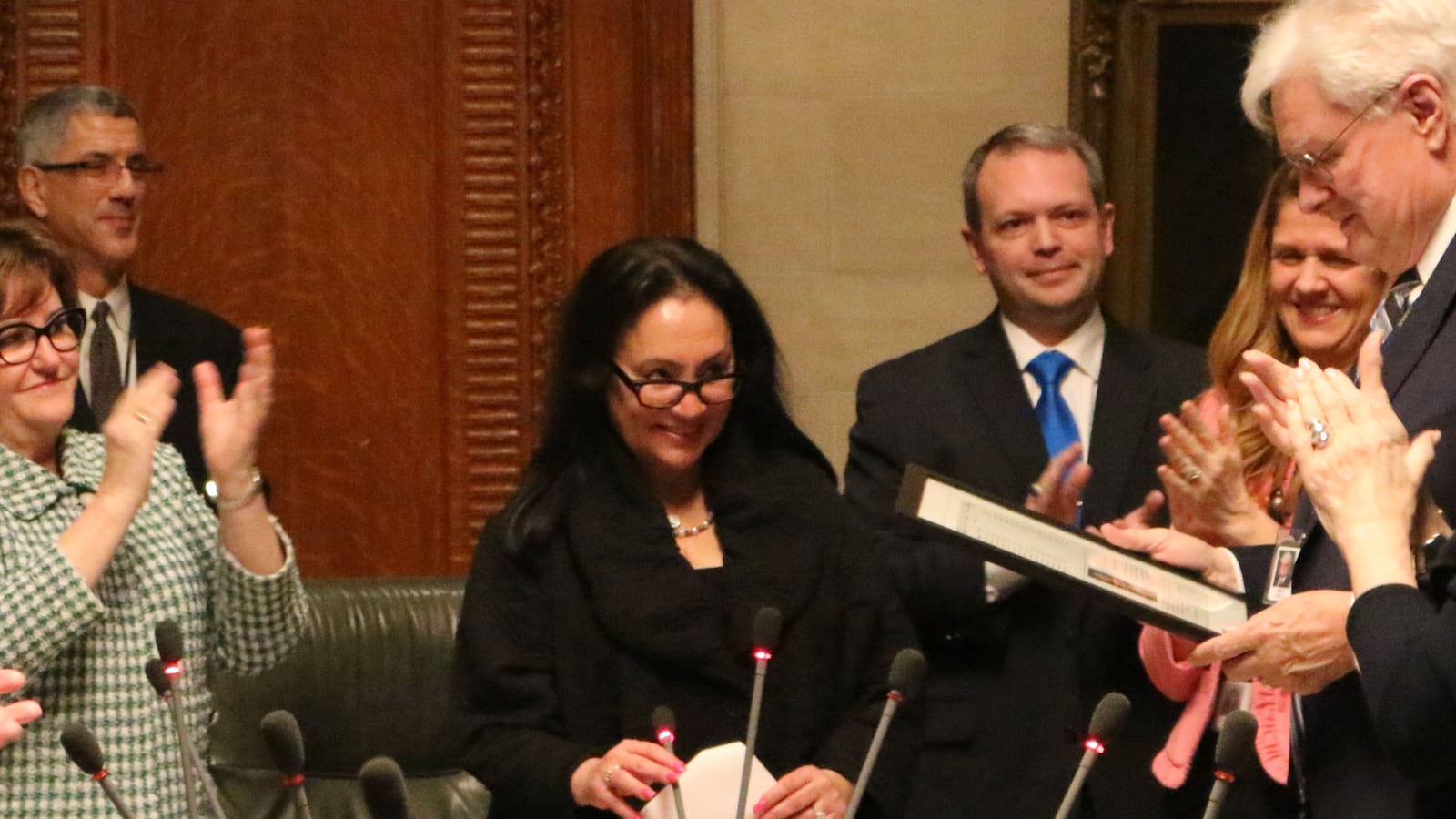New York’s top education policymakers tentatively approved new rules Monday on two hot-button issues: the penalties for districts and schools where many students opt out of state tests — and how nearly 100 charter schools across the state will be evaluated.
Here’s what you need to know about the new policies that the state’s Board of Regents set in motion.
Potential penalties for high opt-out rates were softened
After criticism from activists and parents within the opt-out movement and pushback from the state teachers union, the Regents walked back some of the consequences schools and districts can face when students refuse to take state exams.
Among the most significant changes, which state officials first floated last week, is that districts with high opt-out rates will not be required to use a portion of their federal funding to increase their testing rates.
“I do not ever want to be the person who takes money away from children,” State Education Commissioner MaryEllen Elia said.
The regulations are part of the state’s plan under the federal Every Student Succeeds Act and stem from a federal mandate that 95 percent of students take the state’s annual reading and math exams.
The Regents tweaked other rules requiring schools to create improvement plans if they fall below the 95 percent threshold. Schools with average or higher test scores will not have to come up with those plans.
Still, some parents who support the opt-out movement and who attended Monday’s meeting said the changes don’t go far enough and that schools with lower test scores should also be exempt from coming up with plans to boost participation rates.
“There’s still so much left to be addressed,” said Kemala Karmen, a New York City public school parent who attended the meeting.
The new regulations will likely not have a major effect in New York City, where opt-out rates have remained relatively low. Although New York State has been the epicenter of the test-boycott movement — with roughly one in five students refusing to take the tests, according to the most recent data — less than 4 percent of the city’s students declined to take them.
The Regents unanimously approved the changes, although their vote is technically preliminary. The tweaks will still be subject to a 30-day public comment period and will likely be brought to a final vote in December.
New criteria for evaluating charter schools
The Regents also narrowly approved a new framework for evaluating the roughly 100 charter schools that the board oversees across the state, 63 of which are in New York City.
The new framework is meant to bring charter schools in line with how the state judges district-run schools. Under the new federal education law, the Regents have moved away from emphasizing test scores as the key indicator of a school’s success.
In keeping with that shift, the new charter framework will require schools to have policies covering chronic absenteeism, out-of-school suspension rates, and other measures of school culture to help decide whether they are successful enough to remain open.
And while the new framework does not spell out specific rates of chronic absenteeism a school must fall below, for example, it does explicitly add those policies to the mix of factors the Regents consider. (Officials said that test scores and graduation rates would still remain among the most important factors in evaluating charter schools.)
At Monday’s meeting, discussion of the charter framework prompted broad complaints about the charter sector from some Regents. The state’s framework for evaluating charters was last updated in 2015; the board has added several new members and a new chancellor since then.
The current board has repeatedly sent mixed messages about the sector, approving large batches of new charters while also rejecting others and raising questions about whether the schools serve a fair share of high-need students.
“We’re giving money away from our public schools to charters,” Regent Kathy Cashin said, emphasizing that she believes the state should more deeply probe when students leave charter schools and survey families to find out why.
Charters receive some freedom from rules governing most district-run schools, but in exchange the schools are expected to meet certain performance benchmarks or else face closure.
State officials said the new framework does not include new standards for how New York judges enrollment and retention. Under the current rules, schools must enroll a similar number of students with disabilities, English learners, and low-income students as other nearby district schools. If they don’t, they must show that they’re making progress toward that goal.
Ultimately, the new framework was approved eight to five in a preliminary vote and will be brought back to the full board for approval on Tuesday.

